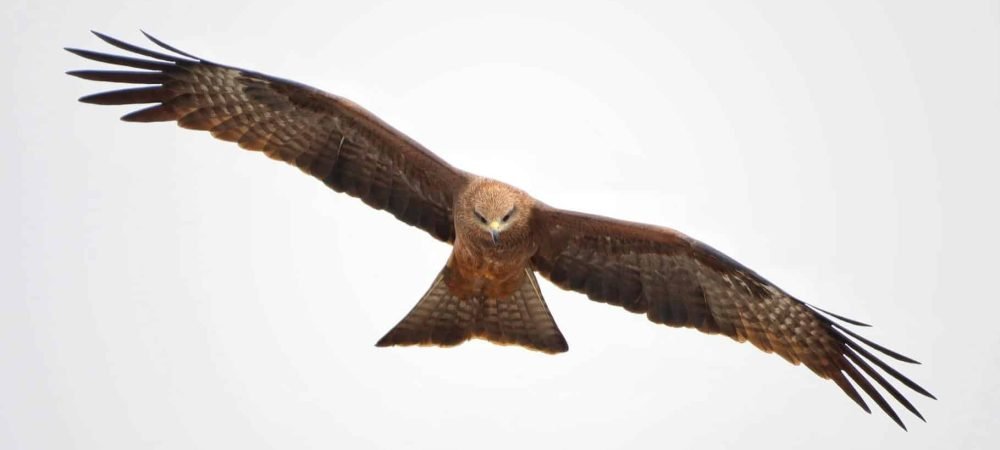
Want to learn more? This book on the Birds of Prey of North America is a fantastic read!
Arkansas is a southern U.S. state bordering the Mississippi River.
Highly recognized for its bountiful parks and wilderness areas, it is the ideal home to a diverse amount of wildlife.
Arkansas is known for its humid subtropical climate, meaning hot and humid summers and mild to cool winters.
Though the state can have numerous weather extremes, the overall climate is often influenced by the warm waters of the Gulf of Mexico as well as the Ozark Mountains.
Boasting its abundant terrain surrounding mountains, caves, and rivers, Arkansas is also home to 52 state parks.
This state is a site for thousands of acres of habitat for birdlife, especially the famed Withrow Springs State Park in the Ozark Mountains.
A diverse nine species of hawk can be discovered in the terrains of Arkansas.
In fact, you would be most likely to observe the Red-tailed Hawk, however, you would least likely see the Ferruginous Hawk. Below you’ll find a comprehensive profile for each of the hawks that can be spotted in Arkansas.
The profiles are inclusive of detailed descriptions and the optimal locations to observe this fascinating species.
Take a look through the article to discover state-specific information about these hawks.
Want to attract birds of prey to your yard? Take a look at our article!
What Hawks can be seen in Arkansas?
Table of Contents
1. Sharp-Shinned Hawk
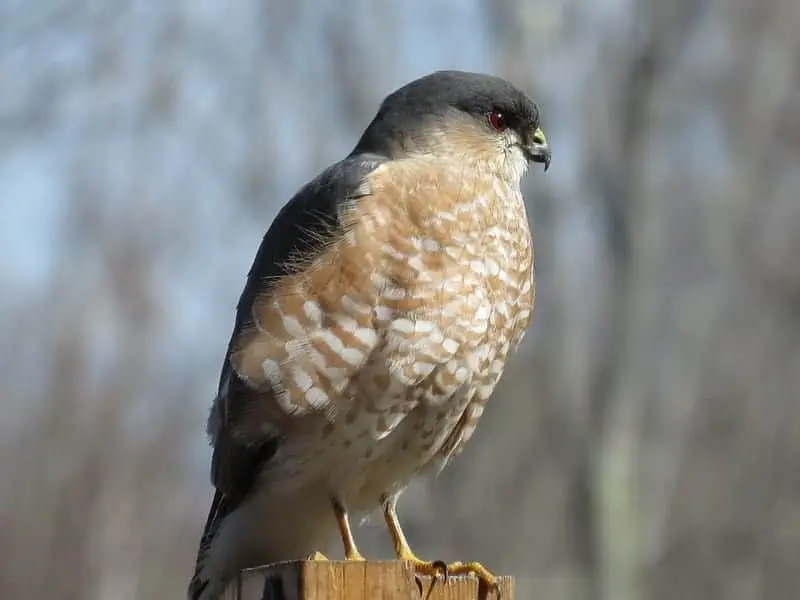
“Sharp-Shinned Hawk” by ‘Dennis Murhpy‘ is licensed under CC BY 2.0
Wingspan
43-56cm
Weight
87-218g
Life Expectancy
3 years
Diet
Robins and Thrushes
The Sharp-Shinned Hawk is small in size.
In fact, the males are the smallest hawks in the United States. On the other hand, females are estimated to be one-third larger.
Adult Sharp-Shinned Hawks have gray feathers and an orange underbelly, while juveniles tend to be brown with white feathers on their underbellies.
Sharp-Shinned Hawks are also a rapidly expanding population offering least concern when it comes to conservation.
Sharp-Shinned Hawks nest in dense trees and breed in large forests.
These hawks offer two recognizable calls such as the common high-pitched cry and a distraught, ‘kik-kik’ sound.
Sharp-Shinned Hawks can be commonly spotted during autumn migration in September and October.
2. Cooper’s Hawk
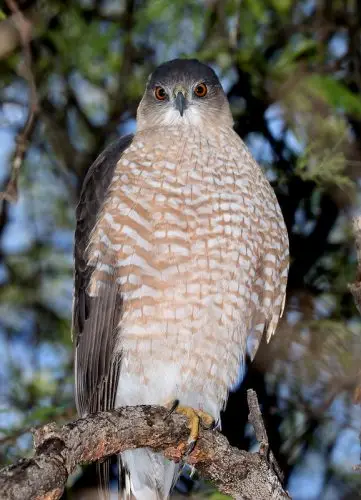
Wingspan
62-90cm
Weight
330-680g
Life Expectancy
Up to 12 years
Diet
Small Birds, Mice & Squirrels
Cooper’s Hawks are small to medium in size, and females are larger than males with regard to this species.
These particular hawks have short rounded wings with a rounded tail.
Mature hawks are a neutral color with orange-colored underbellies. Juveniles, however, display streaky brown feathers on their backs and their wings.
Cooper’s Hawks are rapidly increasing in population and are known to become defensive of their territories. They take habitat in forests, mountain regions, as well as wide open spaces.
These hawks also like to build their nests in tree trunks or along the branches of tall trees. Cooper’s Hawks are typically quiet and reserved during March, which begins their breeding season.
The ideal time to spot one of these hawks is during their autumn migration when they can be seen taking flight through early November.
3. Red-Shouldered Hawk
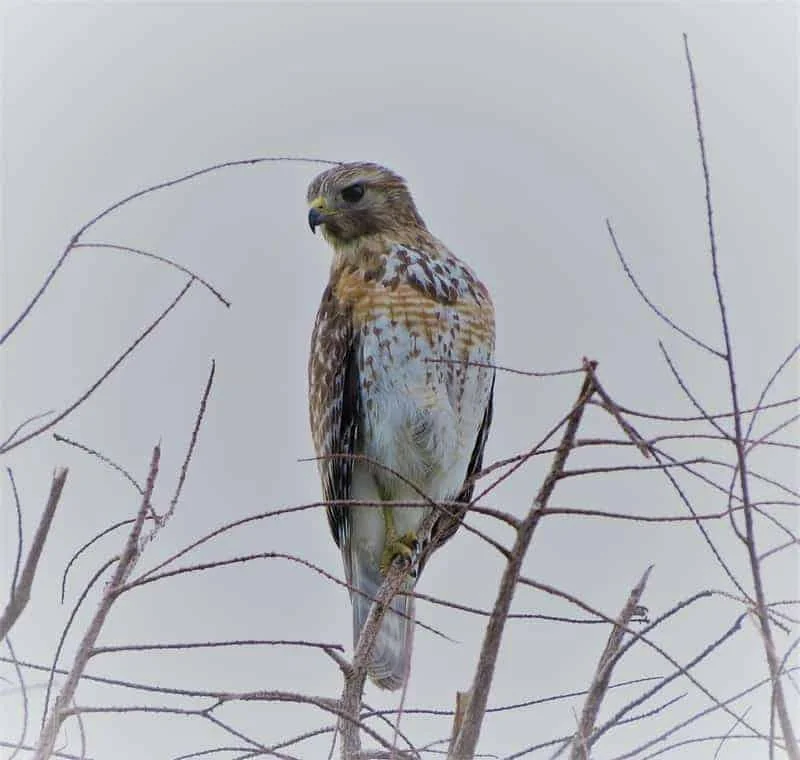
Wingspan
94-111cm
Weight
486g-774g
Life Expectancy
2 years
Diet
Small mammals, reptiles & amphibians
The Red-Shouldered Hawk is typically a larger species that is identified by its long tail and beautiful, bright-colored feathers.
Mature hawks display an array of color patterns, usually a rich orange color underneath, with bold, checkered black and white patterns on their wings.
Though, young Red-Shoulders can be easily distinguished by their white underbellies and brown backs.
Red-Shouldered Hawks tend to build their nests in forests in cone-bearing trees near open waters such as marshes or wetlands.
These hawks usually nest in the trunks of these trees. The Red-Shouldered Hawk’s call is very distinctive, offering a repetitive ‘kee-aah’ sound with a higher-pitched first note followed by a low pitched second note.
The best opportunity to observe a Red-Shouldered Hawk is during autumn migration, as they can be seen soaring, gliding, and flapping at high elevations.
They are also known to be seen in forested areas, or along perches where they prepare to catch their prey.
4. Broad-Winged Hawk
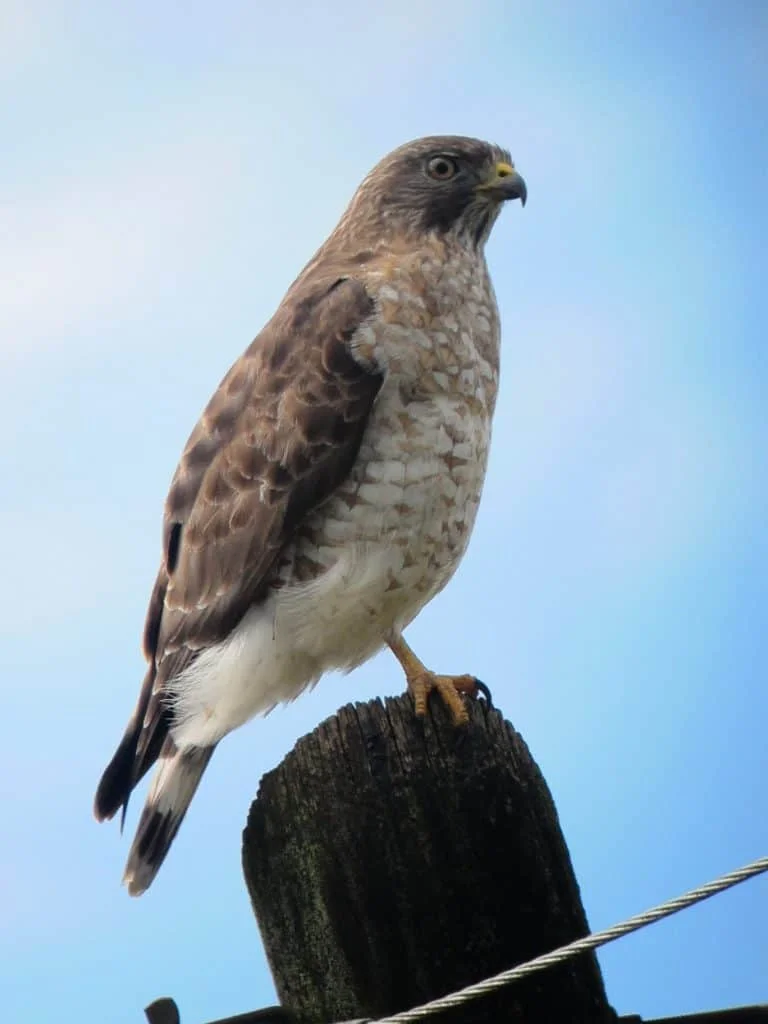
“Broad Winged Hawk” by ‘Felipe Uribe‘ is licensed under CC BY 2.0
Wingspan
81-100cm
Weight
265g-560g
Life Expectancy
Up to 20 years
Diet
Small mammals & insects
Broad-Winged Hawks are medium sized birds and adults display red-brown feathers with black and white bars in their tails, distinguishing them from other varieties of birds.
Juvenile hawks usually have light brown feathers. Broad-Wings can be identified by the high-pitch of their calls during the summer.
However, the call of male Broad-Wings is an octave higher than the females.
These hawks migrate between September and October and can likely be seen nesting in forests and nearby marshes.
5. Swainson’s Hawk
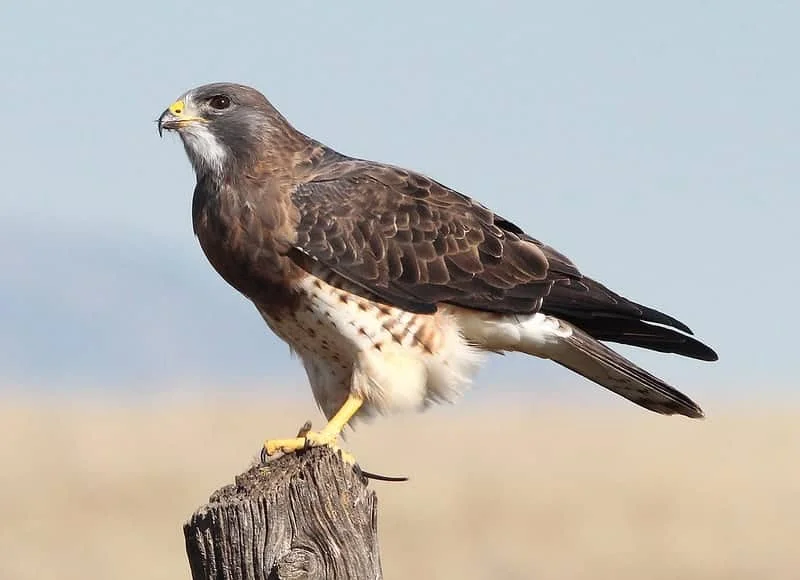
Wingspan
4 feet
Weight
693-1367g
Life Expectancy
16-19 years
Diet
Mammals & Insects
Swainson’s Hawks are large birds, with large wings, and short tails.
These hawks have dark feathers and bright white underbellies.
This species can vary in color, from pale with white underparts, to completely brown.
Male Swainson’s Hawks are known for their alarm-like cries that offer a high pitched, piercing sound.
Female hawks give a similar version of the cry, which is shorter and lower-pitched. Swainson’s Hawks migrate in autumn, usually sometime around August.
These hawks take habitat in grasslands while they also spend time in open areas where they can be seen perched on high branches watching for their prey.
Prairies and rural areas are the optimum time to see a Swainson’s Hawk.
6. Red-Tailed Hawk
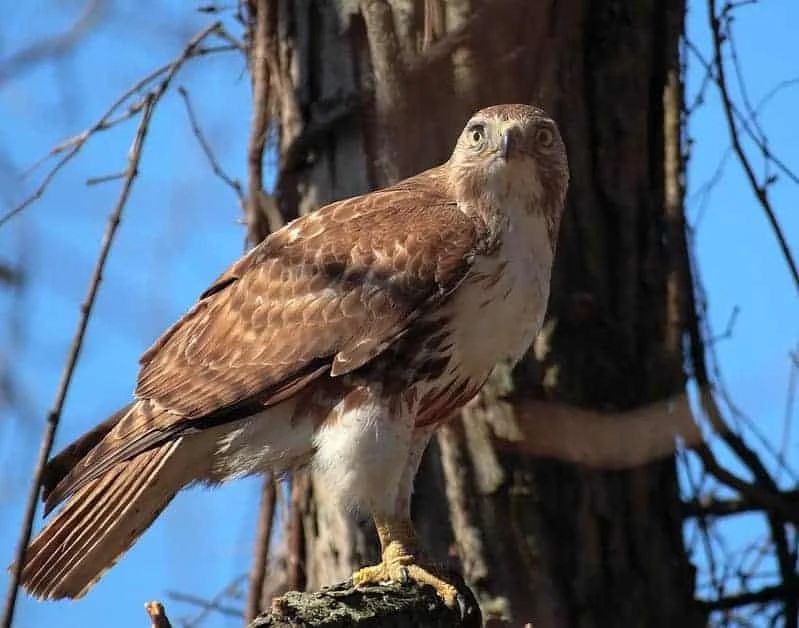
Wingspan
114-133cm
Weight
900-1460g
Life Expectancy
10-15 years
Diet
Small mammals, mice & voles
The Red-Tailed Hawk is well-known for being the second largest hawk and the most common hawk in the majority of North America.
Red-Tails are named for their vibrant red tails and pale feathers on their underbellies.
However, young Red-Tail Hawks do not yet have red tails. You can easily recognize a Red-Tailed hawk by its hoarse sounding call, imitating a ‘kee-eeeee-arr’ sound.
Fascinatingly, the call changes during mating season, resembling a shrill cry.
You can identify the Red-Tails mating season by their flight, in which males will soar at substantial heights, circling above to attract the female Red-Tails.
These hawks tend to be secluded and solitary and can easily be observed in open fields on the edges of large trees where they reside during the summer months.
This is the prime time and place to spot a Red-Tail, identified by their large nests in tall trees awaiting their prey.
7. Rough-Legged Hawk
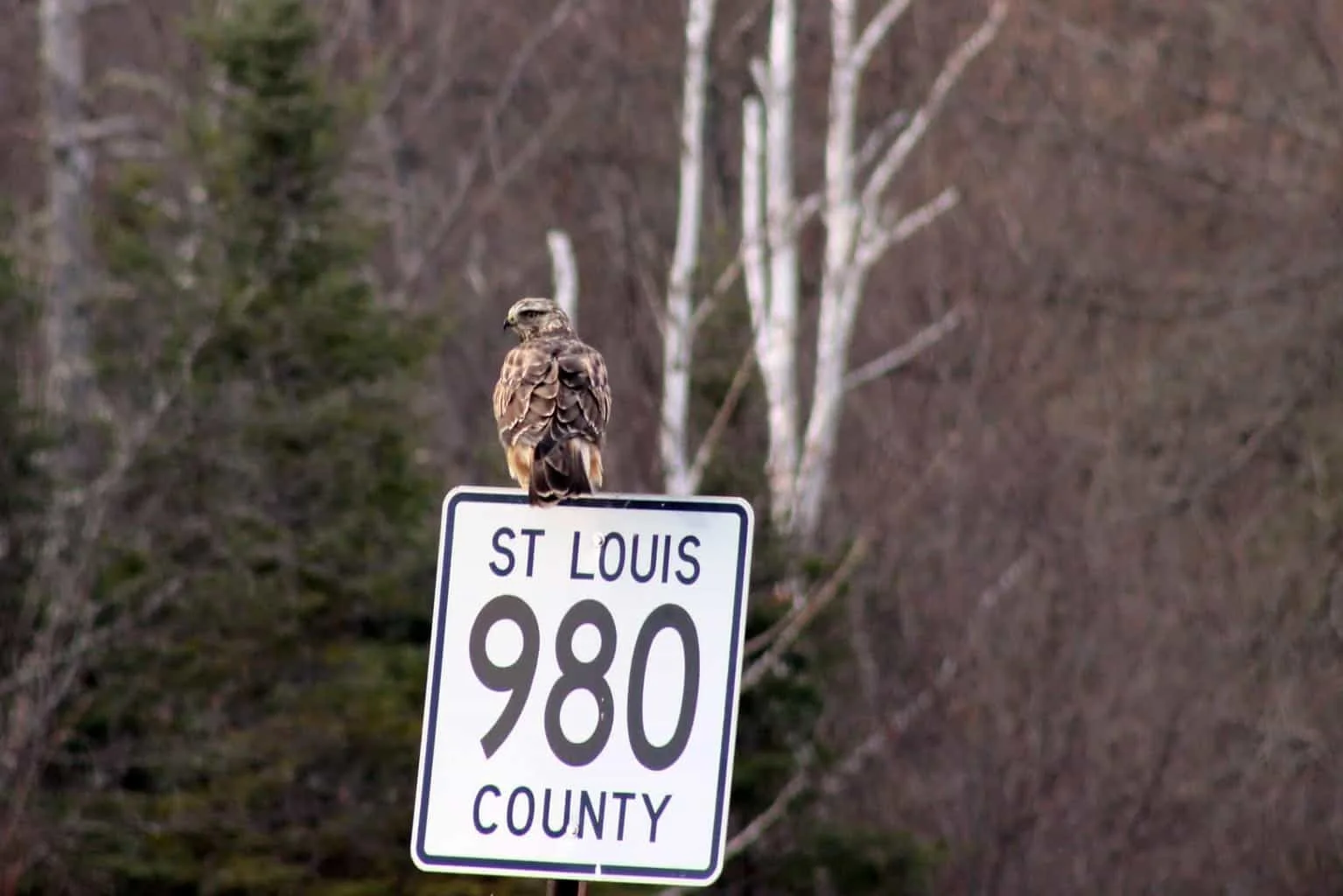
Wingspan
132-138cm
Weight
715-1400g
Life Expectancy
Up to 18 years
Diet
Small rodents
Rough-Legged Hawks are a medium to large size.
They have variable colors, but generally they are recognized by their distinctive feather patterns, light-colored heads and dark underparts.
They also have light-colored tails with darker feathers on the tip of the tail. Rough-Legged Hawks can be readily seen in open areas such as fields and marshes.
These hawks have cries similar to a cat’s hiss. They build their nests with a various collection of sticks and usually build them around cliffs or low forests.
It is common for Rough-Legged hawks to circle at high altitudes during breeding season, when they dive steeply from the elevation.
Rough -Legged Hawks breed in the arctic while they migrate in winter.
You’ll have the best opportunity to observe these hawks during the summer near cliff sides.
8. Ferruginous hawk
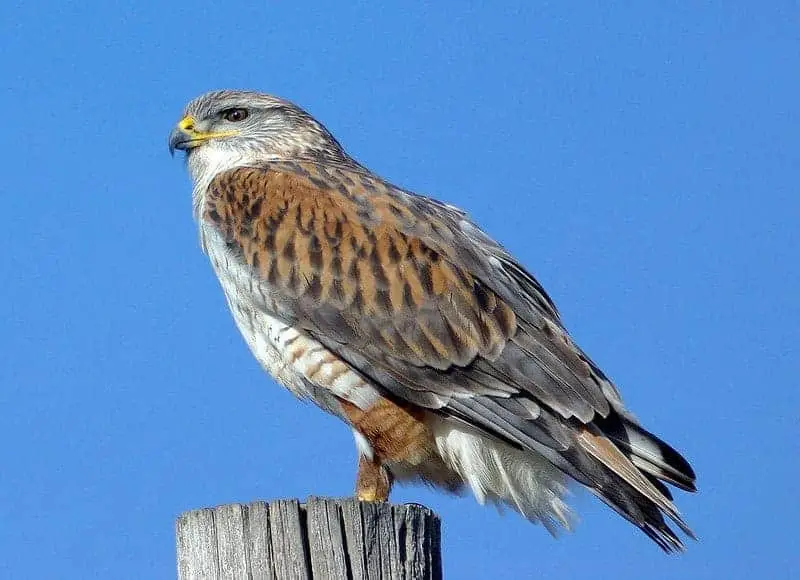
Wingspan
133-142cm
Weight
977-2074g
Life Expectancy
16-20 years
Diet
Small mammals
The Ferruginous Hawk is medium to large sized with pale feathers underneath their wings and on their underbellies.
They can also have orange colored feathers along their legs and bellies.
Ferruginous Hawks tend to take habitat in the open country and grasslands, however they have been known to live in woodlands as well.
You can identify this hawks’ home by their large nests of bulky sticks and materials.
These adult hawks offer a scratchy scream for their call, while juveniles give short ‘cheep’ sounds.
You are most likely to spot the Ferruginous Hawk during the summer, soaring through open country and rural areas which are plentiful throughout the state of Arkansas.
9. Northern Harrier
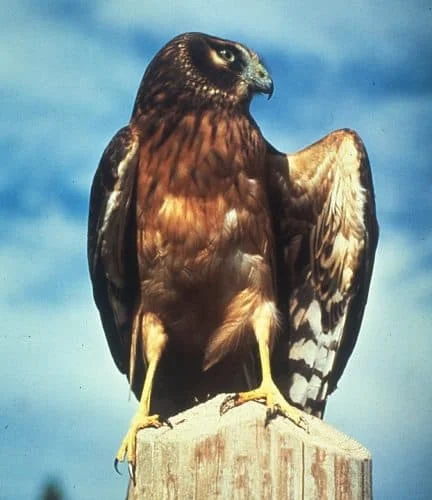
Wingspan
120cm
Weight
390g
Life Expectancy
16 years
Diet
Rodents and small birds
Northern Harrier Hawks are medium-sized hawks and known for their long tails and thin wings.
Female and immature hawks are brown while adult males are pastel gray with white underparts.
Though there is no relation, Northern Harriers are said to look similar to an owl. When Northern Harriers feel threatened, it is common for them to sound a rapid repetition of ‘kek’ sounds.
Otherwise, female hawks are known for their high-pitched whistle calls.
Northern Harriers usually live in wetlands or grasslands, though they build their nests in fields, marshes, and other areas with water.
You are likely to spot these hawks during late autumn and winter months.

More Articles.
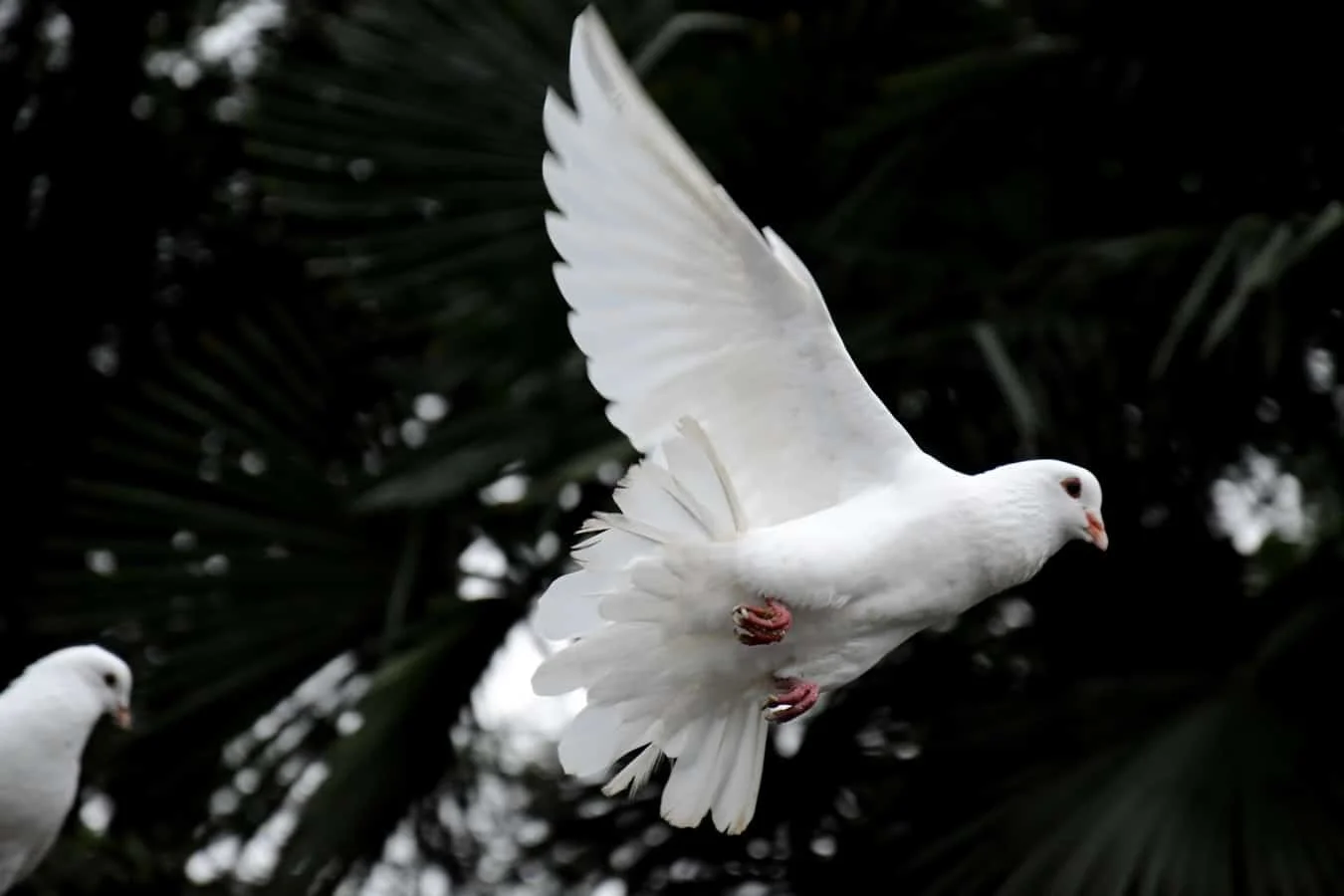
How to Attract Doves to your Yard?
Doves are beautiful birds with many sentimental attachments. Most people affiliate doves with positivity, love,
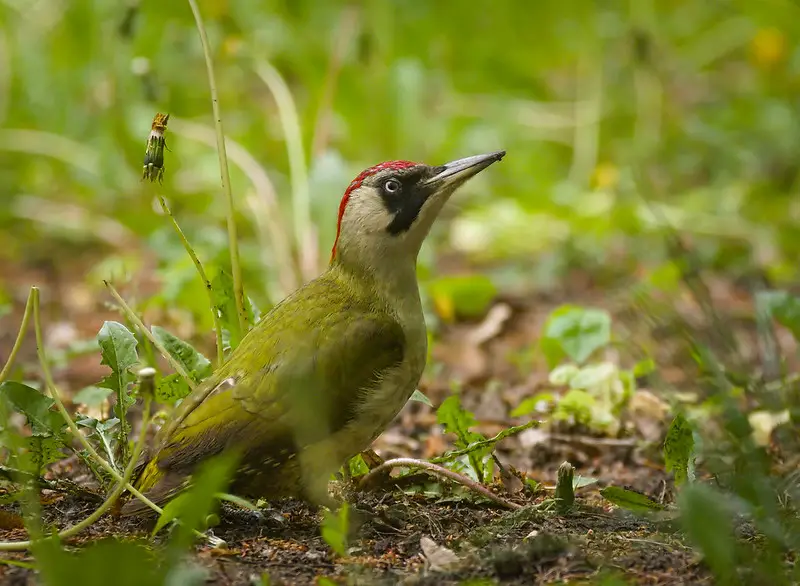
What Woodpeckers can you see in France? (9 Species with Pictures & Sounds)
What woodpeckers can you see in France? There are 9 different species of woodpecker that

Cardinals are one of the most beautiful birds around and are known to delight birdwatchers

About Us
We are avid bird-watchers who recently retired, allowing us more time to travel the world. Fortunately, we have managed to visit numerous countries around Europe, Asia, and America. Watching and photographing birds has been a passion for many years and we are making the most of the extra time on our hands!
